The Shape of Water DVD
$ 18.50
The Shape of Water DVD - $18.50
(plus CA tax, when applicable, and $4.95 shipping and handling)
Institutional Price is $243.50
(plus $4.95 shipping and handling)
Universities, Colleges & Institutions This price applies to universities, colleges, corporations and government agencies, and includes public performance rights for classroom, organizational or library use by the acquiring institution for non-paying audiences only.
We accept purchase orders for institutional sales.
Individual price is $18.50 + tax plus shipping and handling. No P.O. for $18.50 DVDs please.
About the Film
The Shape of Water is a feature documentary that tells the stories of powerful, imaginative and visionary women confronting the destructive development of the Third World with new cultures and a passion for change. The film takes us to Senegal, Israel/Palestine, Brazil, and India where these new cultures, alongside old traditions, end female genital cutting (FGC), offer innovative forms of opposition to the Israeli occupation of Palestine, and show how women are spearheading the implementation of renewable resources and rainforest preservation by tapping trees to obtain rubber. The Shape of Wateralso takes us to a vast co-operative of rural women in India (SEWA) and, in the foothills of the Himalayas, to a farm, Navdanya, set up to preserve biodiversity and women's role as seed keepers. By interweaving images, words, and the actions of Khady, Bilkusben, Oraiza, Dona Antonia, and GilaThe Shape of Water offers fresh and nuanced insights into the lives of women in the Third World.
Narratives of rescue and salvation often underlie documentaries about women's lives in the Third World. In contrast, The Shape of Water offers a complex look that is simultaneously inspiring and yet candid about the contradictions that face women in the Third World as they make change. The rise of globalization, the end of the Cold War, environmental degradation, and failed development in the Third World have increasingly feminized poverty despite women's entry into the labor force in unprecedented numbers. In contrast to many documentaries about the lives of Third World women which present the women as passive victims of their circumstances, this film explores women's efforts to generate vibrant alternatives which dispel apathy by addressing the root causes of poverty.
It traces the vital efforts of women who are pioneering social justice and celebrates their success while probing the tensions in their lives.
Scenes from the film.....
We open in Brazil's Amazonian rainforest, where we accompany Oraiza and Taio who tap trees for rubber. We watch the precise cuts being made, cuts which allow the trees' red bark to release milky latex into battered tin cups. We follow the rubber as it enters the factory for processing – encountering the din of the factory as we watch the young men, the blades, the granulators and the ovens produce the rubber for Pirelli tires.
Later we walk into the life of Dona Antonia. a rubber tapper and a mother who insists that rubber, a renewable resource, is central to the preservation of the rainforest. We witness her stoic portrayal of the assassination of her close friend, Chico Mendes, an icon of unionization and crusader against agri-business and environmental degradation. While in her garden, as well as over scenes of women and children standing in the front lines of theempates/demonstrations against the massive tree-cutting machines of agribusiness she communicates – through songs and words – her vision for preserving the environment and a better life for all.
In Senegal we meet Khady who tells us what it was like to be cut at the age of seven and watch a lively discussion amongst women about the reasons to preserve or abandon this practice. We encounter young women who discuss the profound relevance of FGC in their lives, and attend a live performance by ALIF, a feminist rap group in Dakar. The voices of other women are heard over extracts from dramatic performances against FGC, street theatre produced by groups of villagers and used to spread this dynamic new culture forged out of an ancient tradition. We also meet Mariam, who used to do this cutting and has now stopped the practice.
We have danced with the knife for many years.....
Images of women dancing with knives, throwing them away, using them to plant gardens are underscored with stories of the struggle to end genital cutting and the consequent creation of dynamic new cultures. Yet these revolutionary ideas also create conflict:
We're not doing it any more. But we want the government to understand that if you vote a law to stop doing something that has earned you a living all these years, you have to help us make a living in another way.
Mariam, Excisionist
We then travel to Israel. A shot of a Women in Black (WIB) vigil, a women's peace vigil which has worked courageously for years to end the Israeli occupation of Palestine, fills the screen while an animated Gila tells us about WIB, dismantling checkpoints, and the resistance to the Israeli occupation of Palestine. Smadar an Arab (non-white) Jew who migrated to Israel three years ago – tells us about WIB and Israeli racism, evoking images of the ideals used to attract Jewish settlers into Palestine:
they speak about little houses and scenery li ke the Alps, like red roofs, nice chubby cows, grazing grass
Smadar Lavie, Arab-Jewish citizen
Over tense imagery of urban checkpoints we progress along the fortress-like presence of the recently built Security Wall – called the "Apartheid Wall" by many. It is at this wall that we meet the women whose commitment to peace is realized by creating security in everyday life.
This wall anchors the geography of racism in Jerusalem.
Through a bustling day in the market in Ahmedabad, India, we see bright colors, fabrics, food, clothing...women of all ages, religions, and builds, working at their stalls, buyers and sellers, taking care of a day's business. These images transport us from the rainforest of Brazil to the Self-Employed Women's Association (SEWA) in India, and on to the life of Hiraben, a sixty-year old market trader. Hiraben recounts how she and other women market traders were kicked and beaten for trying to sell their wares but, how, thanks to their determined self-organization into SEWA (Hindi for service), they are able to conduct their trade with dignity and in peace. SEWA is a co-operative of over 700,000 women, some of whom arrive at the newly renovated SEWA buildings and bank to work or apply for loans or microcredit. The power of the women who ensured SEWA's survival is apparent as we watch local women at the SEWA offices, making deals and signing on the dotted lines.... their signatures made possible through SEWA's already-in-place literacy program. More than just a means for an entrepreneur to thrive, SEWA humanizes economics, considering each applicant's individual situation and providing a health insurance plan as needed.
We travel through the streets of Ahmedabad with Hiraben, and visit with Bilkusben, a Muslim kite-maker whose products we see in the annual January kite-festival in Gujarat. Shots of meetings of thousands of rural women demonstrate the working democracy of SEWA, with Hiraben representing its operation in practice.
The themes of the film – new traditions, peace, the environment, social justice – are revealed through the personal stories of the five women. In so doing The Shape of Water pays tribute to women around the world who are creating social justice, laying bare the tensions and contradictions that ground their commitment.
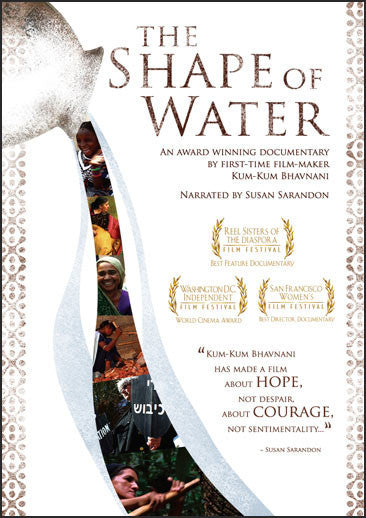
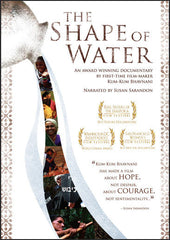
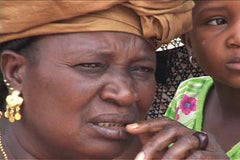
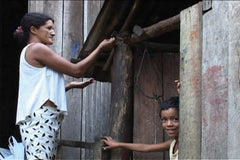
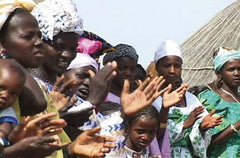

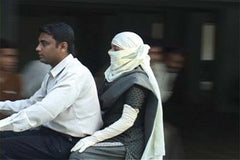
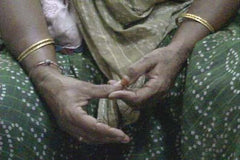
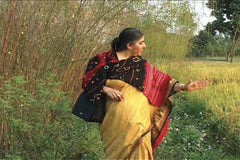
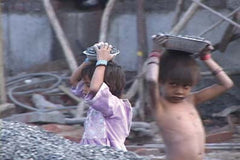
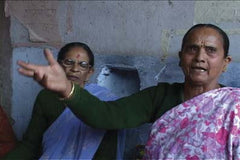
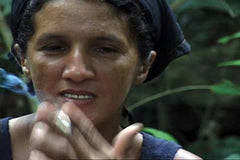
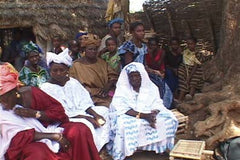
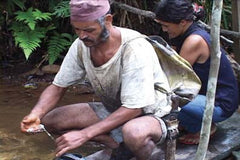
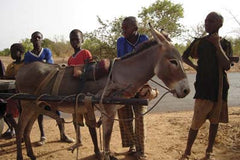
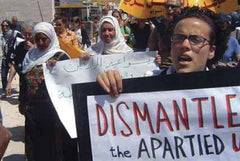
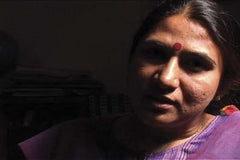

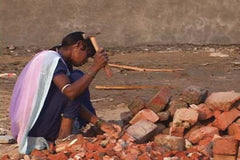
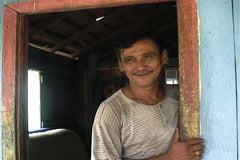
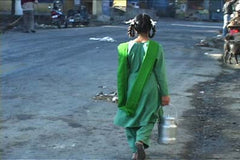

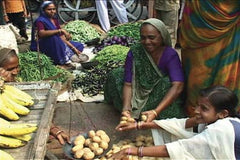
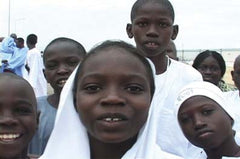
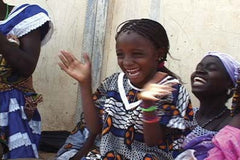
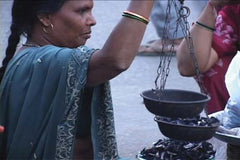
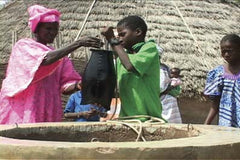
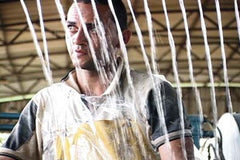
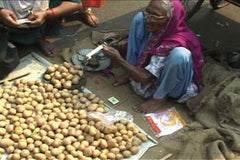
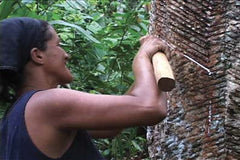
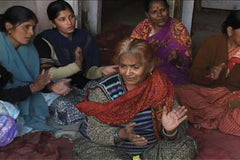
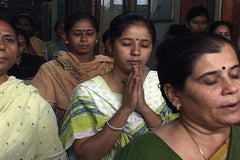
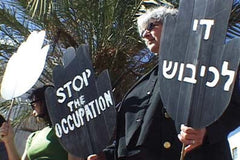
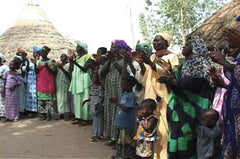
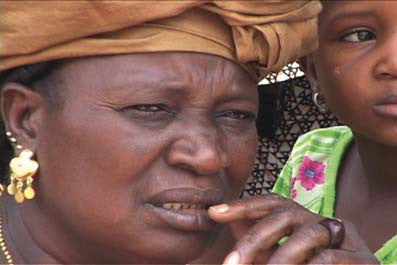

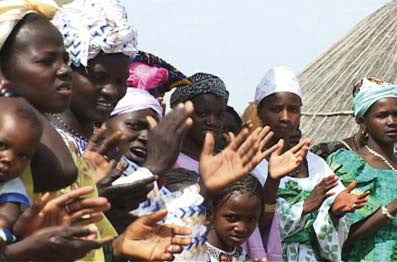
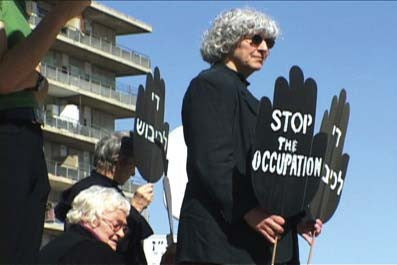
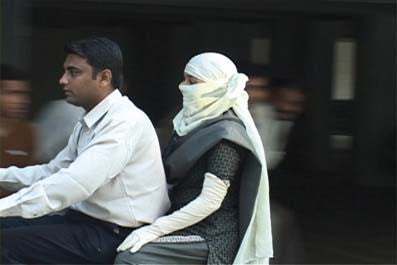
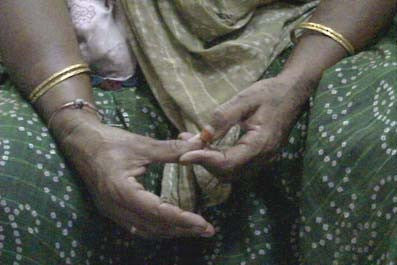
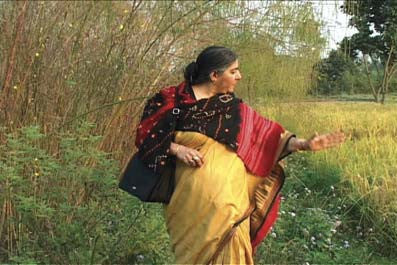
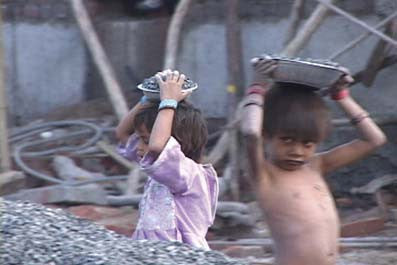
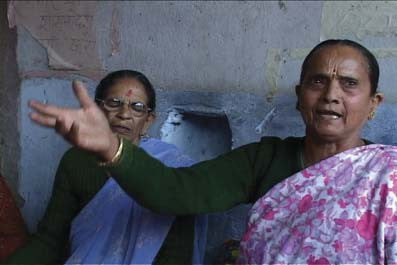
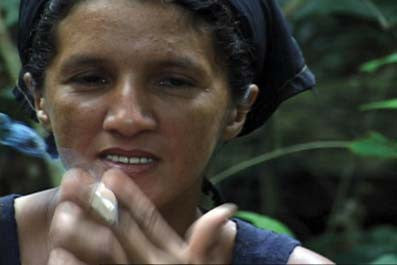
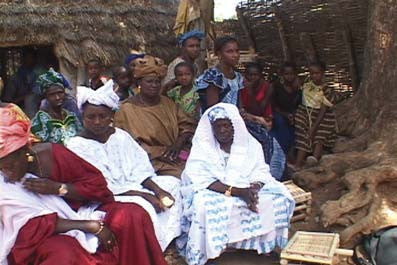
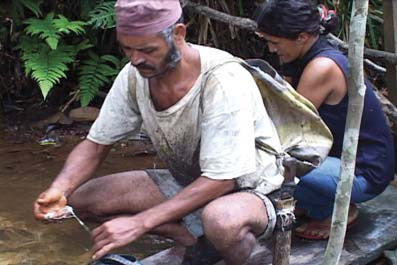
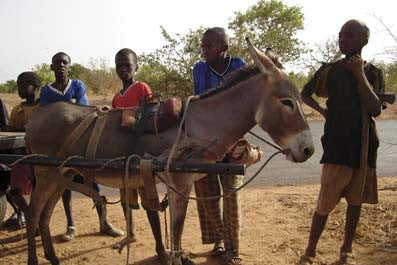
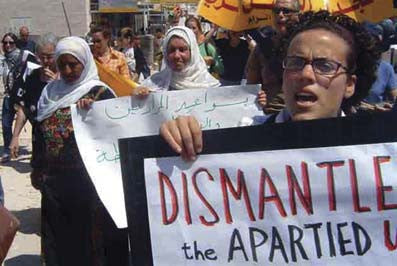
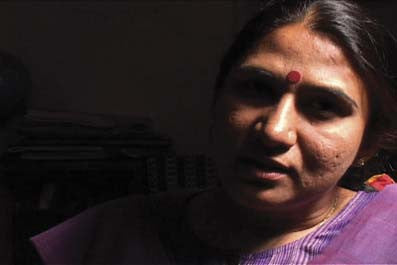

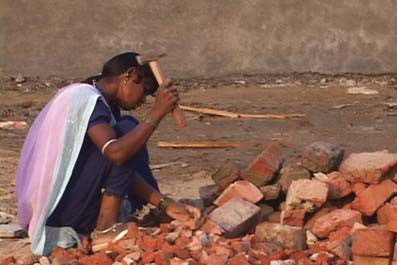
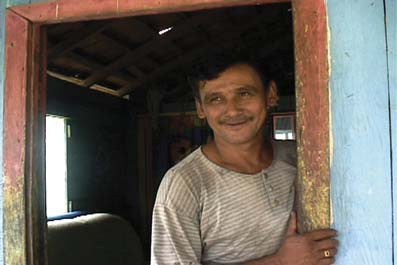
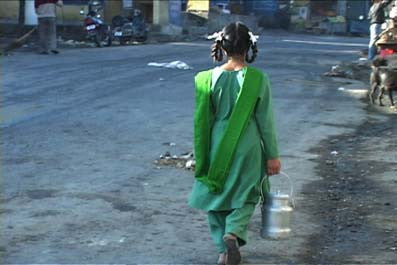
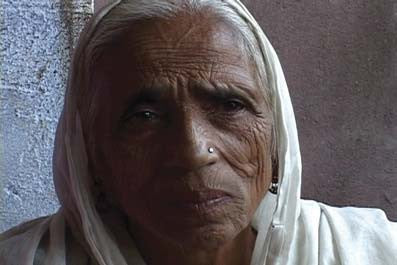
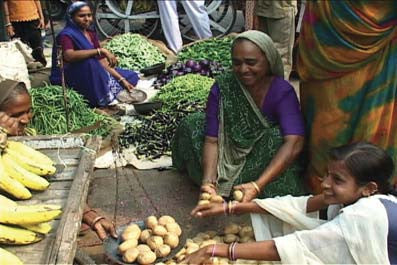
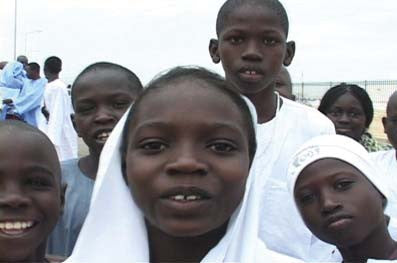
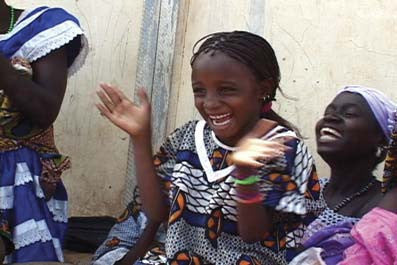

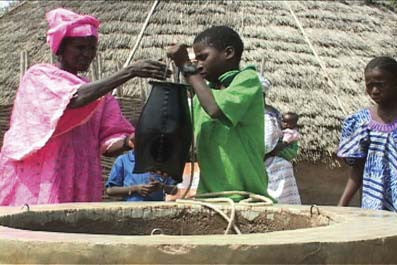
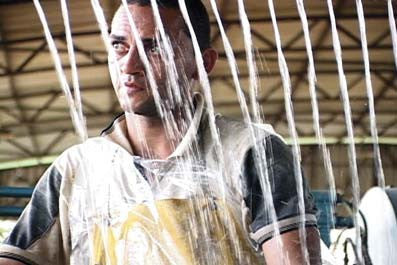
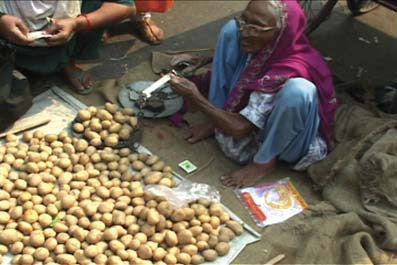
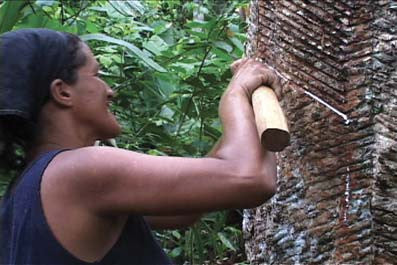
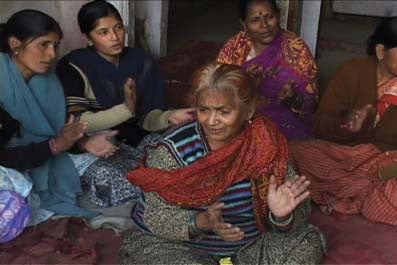
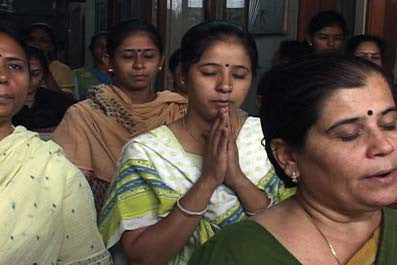
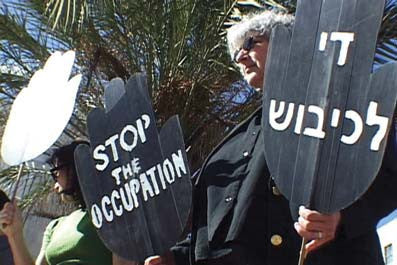
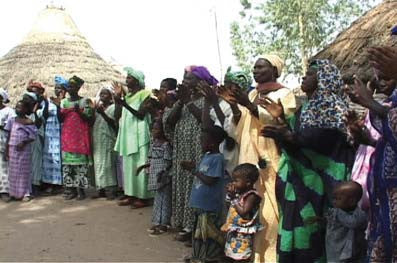
Share this item: